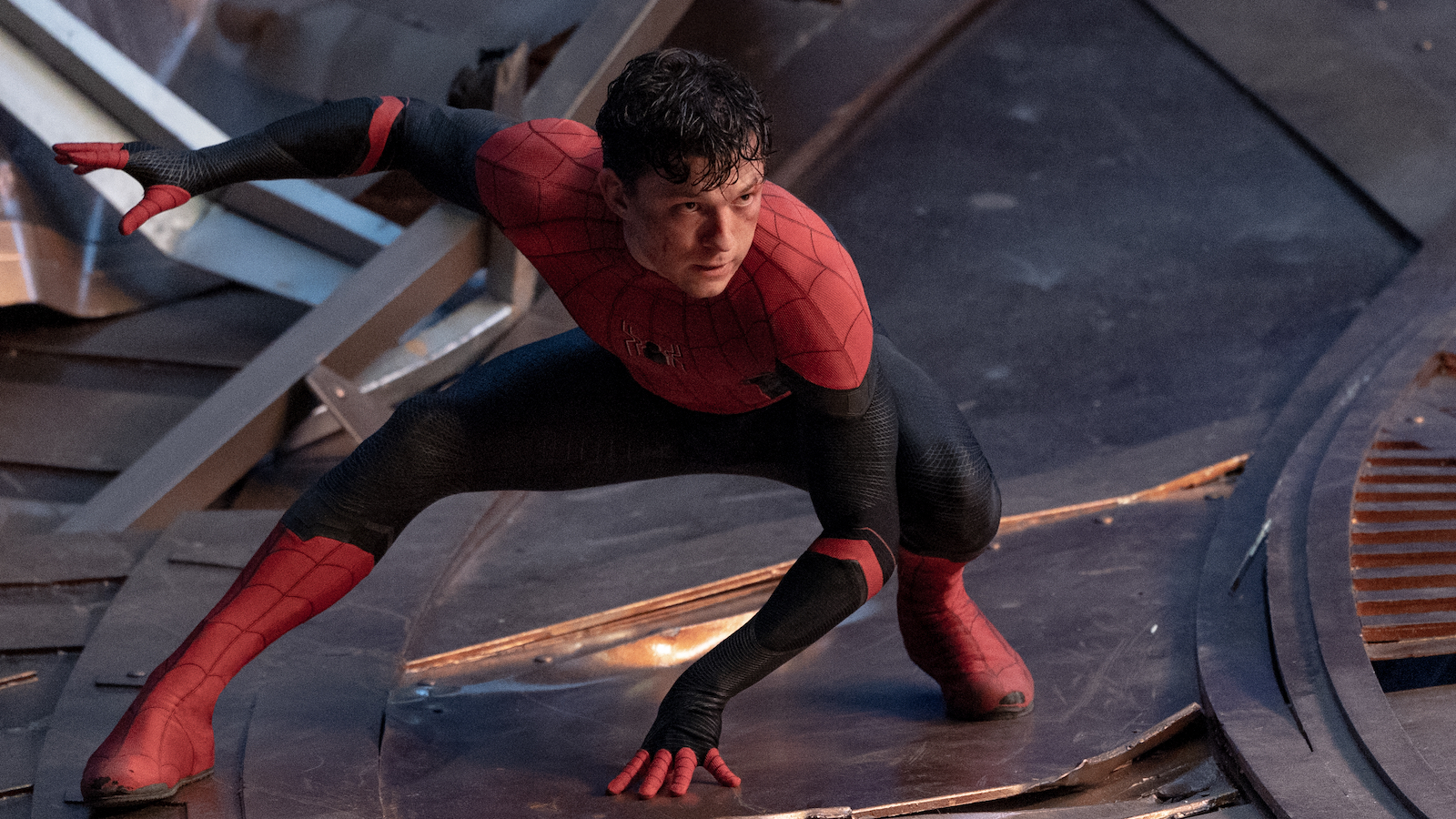
 After a year of exponentially-growing hype, Spider-Man: No Way Home (2021) has thwipped into theaters. Jon Watts returns to the director’s chair with the main cast all reprising their roles in this third chapter of the Marvel Cinematic Universe’s Spider-Man saga.
After a year of exponentially-growing hype, Spider-Man: No Way Home (2021) has thwipped into theaters. Jon Watts returns to the director’s chair with the main cast all reprising their roles in this third chapter of the Marvel Cinematic Universe’s Spider-Man saga.
This is the biggest Spider-Man movie ever, not just in scale but in box office. But does it meet all those wild fan expectations?
Let’s break this down into “spoilers” and “non-spoilers.” Rest assured, this next section won’t reveal anything more than what we saw in the trailers.
Non-Spoilers
When you’re talking about the greatest superhero films of all time, Spider-Man always shows up. Whether it’s Sam Raimi’s much-beloved Spider-Man 2 (2004) or the critically-acclaimed Spider-Man: Into the Spider-Verse (2018), the wall-crawler finds a place.
As of December 17, another film has entered that discussion.
Somewhere between the online rumors, the villain reveals, and the pre-sale ticket records, it became apparent that Spider-Man: No Way Home would be the blockbuster of 2021. But “blockbuster” doesn’t always equal “great film,” and when the hype reaches a bursting point, you can usually expect some bubble-popping disappointment.
This is the rare movie that lives up to the hype. In an interview with Empire Magazine, director Jon Watts called this “Spider-Man: Endgame,” and the comparison holds true. Like Avengers: Endgame (2019), this film juggles a complex plot and massive expectations without dropping a single ball.
Because this is a massive story, as the trailers revealed. We’re dealing with a cross-franchise multiverse, not to mention the fallout from Mysterio. Some fans had justifiable trepidation; the last Spider-Man 3 (2007) was widely critiqued as “overstuffed” with just three villains. The trailers for No Way Home feature a whopping five.
But I would argue that Spider-Man 3 didn’t fail under the weight of villains. It failed because it lost its heart. Even the small scenes felt like parodies of what worked in Spider-Man (2002) and Spider-Man 2.
No Way Home remembers its heart. Even as universes shatter, it’s all about Peter Parker and his friends. We care about whether they get into college as much as we care about Doc Ock and Electro. And the takes us deeper into Peter Parker’s psyche than any MCU Spider-Man movie to date.
But that’s about all I can say without spoilers. So reader beware, this next section will spoil literally everything.
Last chance.
Ready?
Spoilers
Just about every rumor came true. For months, Tom Holland and Charlie Cox and poor Andrew Garfield have been lying their faces off.
Tobey Maguire and Andrew Garfield, the original live action Spider-Men, have returned. And they’ve brought along with just about every villain they ever faced.
When Andrew and Tobey arrive through their magic portals (slung by Ned, no less), my theater erupted in applause. It was an all-time moment of movie-watching joy.
It would be easy to label this as “fan service,” and many have already done so (not all negatively, I might add). But it’s hard to cry “fan service” when it’s done with so much attention and care.
You can easily imagine the cash-grabbing, hollow version of this movie. You can picture the board room of Hollywood suits saying, “People liked that Tobey Maguire guy, right? Throw him in there. And the guy with the tentacles, too.” Some fans worried, for example, that this film would erase Doc Ock’s redemption arc, treating him as just another villain.
But Jon Watts and his team remember what made these characters work. Each one retains his emotional core. Doc Ock is good at heart; Sandman only cares about his daughter; Electro just wants to be seen.
No Way Home doesn’t just reference these movies to score points with fans. It actually brings a new resolution to the previous franchises—a resolution we didn’t even know we needed. Peter’s not just here to defeat these multiversal villains but to heal them. Electro gets back his human body, but more importantly, he gets to hear Andrew’s Spider-Man tell him, “You were never a nobody.” Doc Ock doesn’t just come back to his senses; he gets to see the man that Tobey’s Peter Parker, his old mentee, has become.
This film brims with moments that bring fresh resolution to the older films. Simply put, it’s made with love.
But it also brings something new to Tom Holland’s version of the character.
Holland’s Spider-Man notably has no origin film. Or, I would argue, he’s had no origin film until now.
This Spider-Man has always felt different. He has different friends than other versions. He has different suits. He has a much more Stark-centric story.
But by the end of this film, Peter has changed. I didn’t know we needed this origin story, but we did. This story turns Peter Parker into Spider-Man.
In the final moments, we see Peter in his own run-down apartment, with an unseen landlord reminding him of the rent. We see Peter’s police scanner. We feel a loneliness in the character that we’ve felt from Spider-Man before, but never from this Spider-Man.
Then we see his new costume, perhaps the most comic-accurate Spidey-suit on screen. It’s John Romita Sr.’s design ripped straight from the page. No gimmicks. No Stark enhancements. Just Spider-Man.
And it works because these little details symbolize a deeper change. Peter has learned the lesson that other Spider-Men also had to learn through loss and pain: with great power comes great responsibility.
That’s why—for all the massive, world-bending antics of this movie—it still coheres. It all centers around Peter’s journey, and the destination is perfectly Spider-Man.
There’s still plenty of time to catch Spider-Man: No Way Home in theaters this holiday season. I know I’ll be going again.




